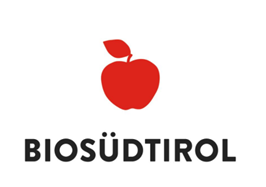Eating a healthy diet as a family is important as parents lay the foundation for how their children will live in the future. If parents demonstrate unhealthy eating habits, children will only copy, causing them to have an unhealthy lifestyle when they get older. These healthy habits aren’t just about eating healthy food, as the preparation of the meal and eating together as a family is just as important.
It can be difficult to have to plan healthy meals, go food shopping, cook the healthy meals for your family and find the time to sit down and eat as a family, but when you do all of these things, you are instilling healthy eating habits in your children. Studies show that children who eat together with their parents at least 3 times per week usually maintain a normal weight and have healthier eating habits.
Once you create a routine to eat healthy as a family, it gets easier to continue. If you’ve been struggling to do this, we have helpful tips for you.
Get everyone involved
Make mealtime fun! Get every member of the family involved in planning the meals and preparing the food, this way, children will look forward to mealtime and will see you preparing healthy food options.
- Make sure every family member knows when dinnertime is by scheduling it into the family calendar so nobody can miss it due to training or visiting a friend.
- Let younger children help to set the table and do simple tasks like washing fresh produce.
- Ask older teenagers to peel and chop fruits and vegetables, or weigh out ingredients.
- Don’t allow phones at the dinner table as this will cause children to be distracted and they won’t be paying attention to what they are eating, and they won’t be involved in family conversations.
- Make sure everyone stays seated at the dinner table until every member of the family has finished their meal.
Plan
Trying to plan three healthy meals a day plus snacks can take up a lot of time, but taking the time to do this will ensure you stick to a healthy, nutritious and balanced diet. Creating a meal plan and sticking to it is the best way to keep you and your family on track.
- To make your meal plan, consider the breakfast, lunch, dinner and snacks you want your family to be eating for the week. Get your children involved to make sure they feel included in the planning of healthy meals.
- Choose healthy meals that use a lot of the same ingredients so you don’t have to worry about food waste or going over your budget.
- Make a shopping list based off of your meal plan and bring it with you when shopping. Only buy items on your shopping last as we can often be tempted by unhealthy foods at the till.
- Don’t go shopping on an empty stomach and make sure your children aren’t hungry either because this will make you more likely to impulse-buy unnecessary foods that weren’t in your original plan.
- Stock-up on non-perishable foods such as pasta, rice, oil and frozen items so you don’t have to head back to the shop mid-week.
- Prep your food at the start of the week by peeling and chopping your fruit and vegetables and storing them in the fridge or freezer. If you have extra time, batch cook big portions of food and freeze them for when you’re too busy to cook but still want your family to eat a balanced meal together.
Eat organic
When choosing which ingredients to buy, organic foods are the best option to add to your trolley. Buying organic foods allows you to support organic farmers who strive to create closed cycles between animals, humans and plants to help you understand exactly what you’re eating. There are many reasons to buy organic produce including:
- No use of genetic engineering.
- No chemical-synthetic fertilisers or pesticides are used.
- The raising of livestock and selective breeding, also known as animal husbandry, is appropriate to the species of animal.
- Fewer additives or artificial flavour enhancers.
All of these benefits of organic foods are important for your family’s health and the environment, but not all organic foods are healthy. For example, crisps, biscuits and ice-cream can be organic but are not necessarily very healthy to be eating in excess.
An example of a healthy organic food would be an organic apple, more specifically, Biosüdtirol apples. These aren’t any ordinary apples as they have a wide variety to sink your teeth into. If you’re more of a sweet person, Fuji and Golden Delicious are the ones for you, but if you prefer a more sour fruit, you should try Pilot and Topaz. Can’t make your mind up? Pinova and SQ 159/ Natyra™ are a lovely mix of both.
For more information, visit http://www.biosuedtirol.com
Brought to you by











